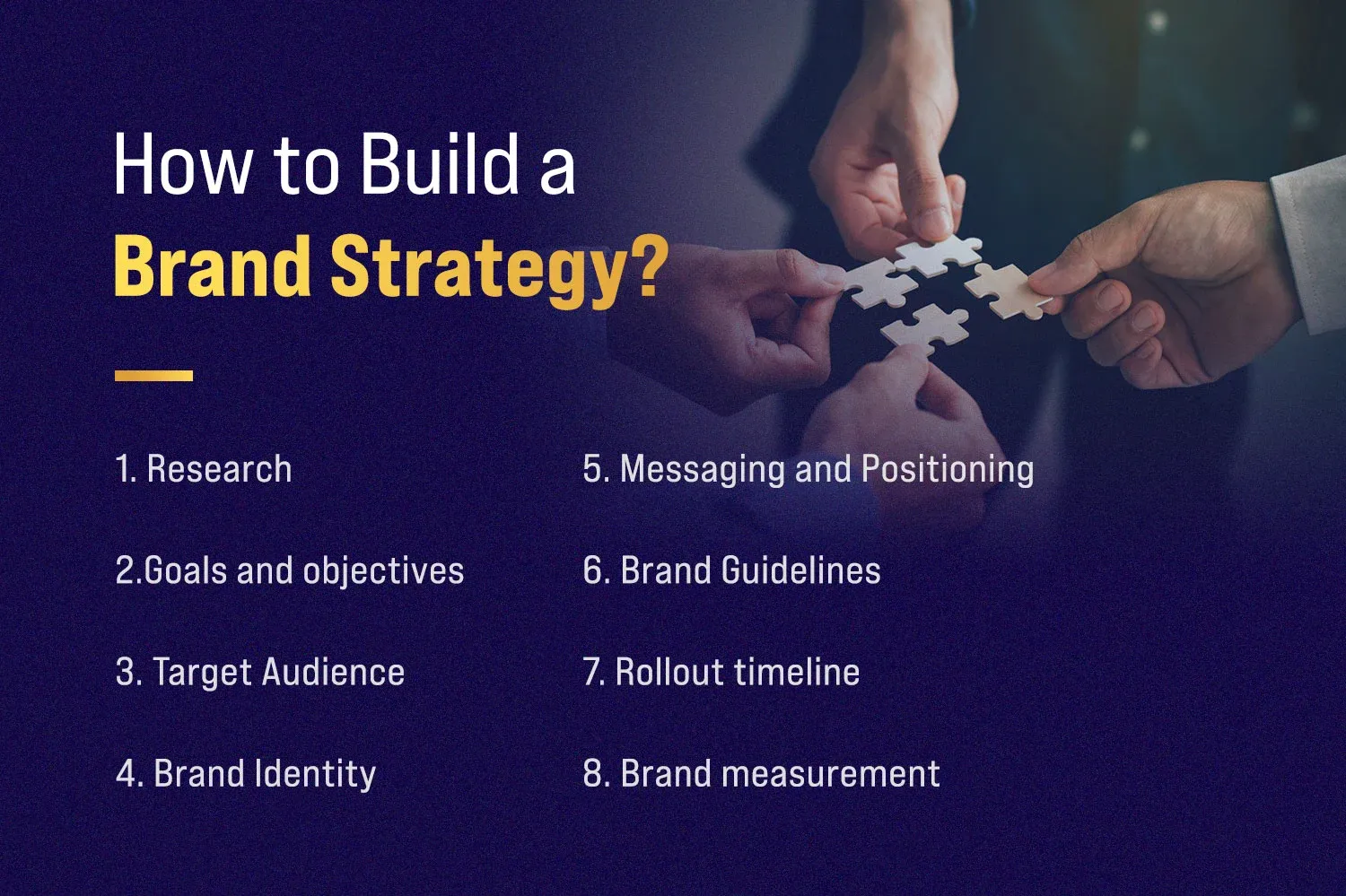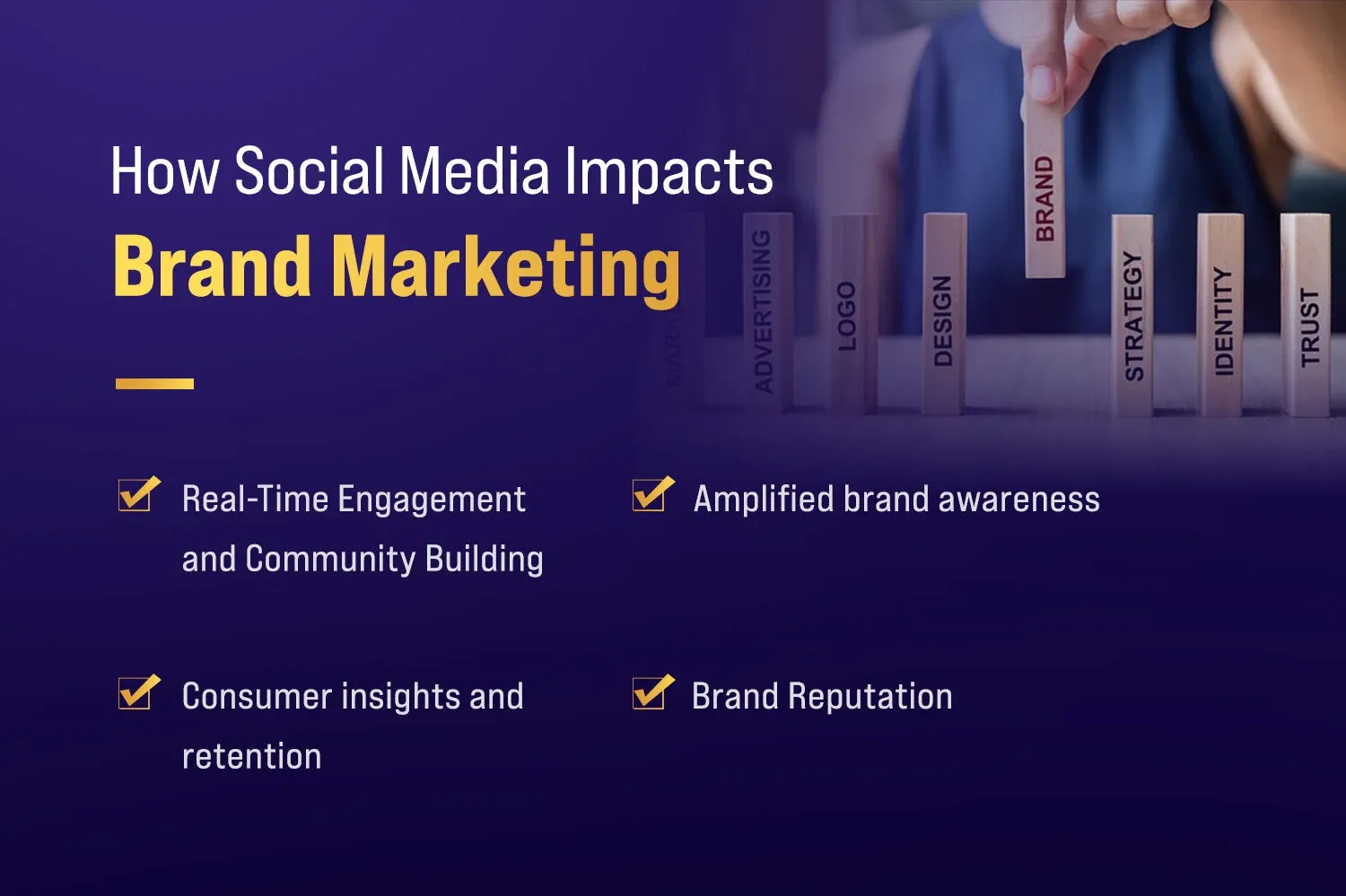What is Brand Marketing?

Brand marketing is the long-term process of building and promoting a brand’s unique identity to connect with consumers. A brand is more than just a name or logo – it’s the complete personality of a company or product, including its values, visual design, and voice. For example, an iconic brand combines a memorable logo and tagline with a consistent feel (like “innovative” or “trustworthy”) in the minds of customers.
Brand marketing then uses that identity to forge an emotional connection with customers and grow loyalty. In practice, brand marketers emphasize the company’s overall promise and values across many channels (advertising, content, social media, etc.) rather than just pitching individual products. The goal of brand marketing is to boost the brand’s value by making it recognizable, meaningful, and preferable to consumers.
This article breaks down the core concepts of brand marketing, examines why it matters, and explains how it influences consumer behavior and drives business success.
What is a brand?
A brand is any distinctive feature (name, term, design, symbol, or combination) that identifies a company’s goods or services and sets it apart from others. In other words, a brand is how a company differentiates itself from its competitors and portrays its public personality.
This includes tangible elements like the brand’s name, logo, tagline, and color palette, as well as intangible qualities like the brand’s values and tone. Consumers subconsciously form impressions based on these elements. For example, a sportswear brand might use bold colors and inspiring slogans to signal energy and performance, while a tech brand might emphasize sleek design and innovation.
Over time, consistent use of these elements builds brand recognition, so people immediately associate the brand’s visuals and messaging with the company. A clear, cohesive brand makes it easier for consumers to recall and prefer it over competitors. A brand encompasses:
- Perception: What people think and feel when they see your name or product.
- Reputation: The overall perception shaped by customer interactions, public discourse, and branding initiatives.
- Attributes: The specific qualities and values people associate with your organization.
What is Brand Marketing?
Brand marketing is the strategic approach companies use to promote and establish a brand’s identity in the market. Instead of focusing on short-term product sales, brand marketing promotes the company’s core values, mission, and overall image. For example, it might highlight what the brand stands for (innovation, reliability, sustainability, etc.) and use products as examples of that promise.
A well-crafted brand marketing strategy uses various channels like advertising, social media, content, and events to create a consistent brand story and reach consumers emotionally. Ultimately, brand marketing aims to connect with customers on a deeper level, build loyalty, and enhance the brand’s value so the company can sustain long-term growth. The key characteristics of brand marketing include:
- Storytelling: Focus on narratives that reflect your brand’s values.
- Consistency: Repeated, clear messaging across all touchpoints.
- Customer-centricity: Align with the audience's identity, values, and needs.
- Emotional resonance: Connect with people on a deeper, psychological level.
What are Brand Attributes?
Brand attributes are the defining qualities and features that consumers mentally link to a particular brand. These include both tangible attributes (like the brand’s name, logo, tagline, and color scheme) and intangible attributes (like personality traits or emotions the brand evokes). For instance, a brand could be perceived as cutting-edge, reliable, high-end, or approachable.
These attributes act like clues that help consumers form a mental image of the brand without thinking of a specific product. As noted by experts, brand attributes encompass “traits and descriptors that define a brand’s identity, such as being forward-thinking, dependable, contemporary, or exclusive.” By carefully choosing and reinforcing the right attributes, companies shape how people perceive the brand.
What is Brand Equity?
Brand equity represents the intangible worth a brand holds among its audience. It measures how well people know, trust, and prefer the brand compared to others. High brand equity means customers recognize the brand easily, believe in its promises, and choose it even if there are similar products around. For example, people might be willing to pay more for a well-known brand because they feel it’s better or more reliable.
Brand equity accumulates gradually through sustained, favorable brand engagements. Companies assess brand equity by looking at factors like brand awareness (how many people know the brand), brand loyalty (how often customers repurchase), brand preference (how strongly they choose it over competitors), and financial performance related to the brand.
What is a Brand-Consumer Relationship?
The brand–consumer relationship is the emotional and functional connection between a brand and its customers. It reflects the intensity of consumer sentiment and their level of connection with the brand. This relationship can be weak or strong, positive or negative.
The strongest brand connections are both positive and emotionally rooted. That means customers not only think a brand works well for them (functional Advertising) but also feel an emotional bond or loyalty. For example, a consumer might trust a car brand because of reliable performance and feel proud to be associated with its adventurous image.
These profound bonds transform occasional consumers into devoted supporters. In practice, brands nurture relationships through consistent messaging, exceptional experiences, and by showing they care about customers’ needs. When a brand-consumer relationship is robust, customers exhibit repeat purchases and organic advocacy.
Why is Branding Important?
Branding is crucial because today’s markets are crowded, and consumers have endless choices. A powerful brand distinguishes a business and offers a compelling rationale for consumer preference. When a brand tells a compelling story and lives up to it, it gives customers something to believe in.
This unique story or mission sparks interest and invites consumers to learn more. Good branding shifts the focus from product features to what the company stands for, like quality, innovation, or sustainability. By consistently reinforcing those values, a brand makes customers feel good about supporting it and builds emotional loyalty.
In essence, branding crafts a distinctive identity that resonates emotionally and cognitively. Brands that excel at branding leave a lasting impression that fosters advocacy; satisfied customers become vocal supporters, boosting word-of-mouth and loyalty for the long term. Effective branding cuts through the noise of the market and builds the trust and recognition that keeps customers coming back.
How to Build a Brand Strategy?
A brand strategy is the roadmap companies use to develop and manage their brand over time. A well-defined strategy aligns all branding activities to foster a unified, impactful brand. Key elements of a brand strategy contribute as follows:

Research
Before anything else, effective brand strategy starts with research. Companies must study the market, competitors, and target customers to find a unique position. This entails evaluating competitors and pinpointing the unique value the brand delivers.
Market research informs attainable objectives and uncovers competitors’ positioning tactics. For instance, market research might show that none of your competitors serve a niche audience in the way your brand can, suggesting an opportunity to stand out.
Goals and objectives
Next, the brand must define clear, measurable goals. This includes the big-picture brand goal and specific marketing metrics. Companies ask, what does our brand promise to deliver to customers? And what experiences should customers have with our brand? Answering these questions clarifies the brand’s purpose and helps shape everything else.
For example, if a brand’s promise is to simplify shopping, a goal might be “achieve 70% brand awareness among target consumers within 2 years.” Goals may include metrics like brand awareness scores, customer satisfaction, or market share targets, ensuring the strategy has concrete success measure.
Target Audience
A brand strategy must be built around who the brand is addressing. Companies develop buyer personas—fictional profiles of ideal customers—including demographics, behaviors, and needs. Knowing the audience informs the brand’s tone of voice, visual style, and channels.
For instance, a brand aiming at young professionals might use modern, minimalist visuals and communicate mostly on Instagram or LinkedIn. Clearly defining the audience ensures that brand messaging and marketing reach the right people and address their interests.
Brand Identity
Brand identity is the visual and side of a brand. It includes the name, logo, tagline, color palette, typography, and imagery that together form the brand’s look and feel. These elements must harmonize to reflect the brand’s character—e.g., sophistication for luxury brands or vibrancy for playful ones.
A strong, consistent brand identity helps customers immediately recognize the brand and recall what it stands for. Consistency across all touchpoints (packaging, website, ads) is key – it builds awareness and trust over time.
Messaging and Positioning
Messaging defines the brand’s core promise and key talking points for both internal and external audiences. Positioning clarifies how the brand is different from competitors. Companies craft a positioning statement that answers: What does our brand do, for whom, and how is it unique?
For instance, a positioning might be “Brand X provides eco-friendly cleaning products for busy families, combining effectiveness with natural ingredients.” This ensures every ad or social post highlights the brand’s distinct benefits.
Brand Guidelines
Brand guidelines serve as the official framework for applying brand elements consistently. They explain the voice, tone, logo use, color schemes, and graphic style so that everyone (employees, marketers, and partners) use the brand consistently.
Guidelines might include approved fonts, examples of imagery style, and dos and don’ts for the logo. Having clear guidelines is critical for scaling the brand: when new campaigns, products, or ads are created, everyone refers to the same style guide. This ensures the brand always looks and sounds the same, which strengthens recognition and prevents confusion.
Rollout timeline
A brand strategy should include a timeline for rolling out branding changes and campaigns. For example, a company might plan when to launch a new website, run an ad campaign, or release branded merchandise.
If the strategy involves a rebrand (new logo or name), the timeline will cover updating everything from email signatures to storefront signs. Careful scheduling ensures that all new brand elements and types of marketing activities happen in a coordinated way, maximizing impact while minimizing disruption.
Brand measurement
Finally, a good brand strategy tracks progress through metrics. This means identifying key performance indicators (KPIs) and tools to measure them. Common metrics include brand awareness (surveys or social listening to see if people recognize the brand), brand loyalty (repeat purchase rate, Net Promoter Score), and brand relevance/differentiation.
For example, a company might survey customers to gauge how likely they are to recommend the brand (NPS) and monitor web traffic or social engagement trends. By regularly reviewing these numbers, marketers can see if the brand strategy is working or needs adjustment.
Trends in Brand Marketing
Brand marketing constantly evolves with technology and culture. Current trends include:
- Data and AI Driven Personalization: Brands are using programmatic advertising and AI tools to target audiences more precisely. For example, automated ad-buying can optimize campaigns in real time, showing brand messages to the right consumer segments at the right time. AI also enables personalized content and product recommendations, making marketing feel more relevant to each person.
- Video and Storytelling Focus: Visual media dominates attention. Brands now leverage video (ads, reels, live streams) to narrate stories more dynamically, as studies show audiences favor video over text. Story-driven video helps humanize brands and convey values quickly on social platforms.
- Omnichannel Integration: Brands are coordinating messaging across all touchpoints: digital ads, social, streaming (OTT), blogs, email, and in-store. An omnichannel approach guarantees uniformity across every consumer touchpoint. For instance, a brand can launch a new product simultaneously via Instagram posts, YouTube videos, and shop displays.
- Content and Community: To reinforce brand story, many brands build communities around their values. Content marketing like blogs, podcasts, branded experiences support this. For example, some brands encourage customers to “follow” or join subscription updates, so fans always hear about new products or stories.
- Purpose and Younger Audiences: Recent marketing surveys highlight that brands will focus heavily on these younger demographics and make brand values (social responsibility, inclusivity, etc.) a central theme. Modern consumers demand brands to voice opinions and communicate with sincerity. Hence, modern brand marketing blends technology (data, AI, video) with a human touch (story, values, community) to build deep connections.
Differentiating Branding vs Marketing
It’s common to confuse branding with marketing, but they have different roles. Branding is about defining the brand’s identity and long-term image, while marketing is about promoting products or campaigns (usually on a shorter timeline). In simple terms:
- Long-Term vs. Short-Term: Branding focuses on long-term goals and the company’s core values and personality. Marketing focuses on immediate goals like sales and campaign results. For example, branding ensures every ad or product reflects the same identity, whereas marketing might change messages frequently to match recent trends.
- Consistent vs. Fluid: A brand’s identity should stay consistent over time. However, marketing tactics (advertising channels, creative themes) can evolve with consumer interests. In other words, branding provides the constant foundation; whereas marketing builds on it flexibly.
- Relationship vs. Transaction: Branding is about building relationships and emotional connections with consumers. It cultivates holistic brand trust and perception. Marketing, on the other hand, often focuses on creating immediate needs or persuading a consumer to make a purchase right now. Branding “invests” in reputation and loyalty, while marketing “spends” on driving sales.
Operationally, branding and marketing must synergize for optimal impact. Neither is more important, but branding typically comes first, as a clear brand identity makes marketing more effective.
How Social Media Impacts Brand Marketing?
Social media has become a key part of modern brand marketing, with both positive and challenging effects:

- Real-Time Engagement and Community Building: Social platforms let brands communicate instantly with customers. Companies can share content, respond to comments, and gather feedback in real time. Two-way engagement nurtures community, adds relatability, and strengthens consumer ties.
- Amplified brand awareness: social media enables brands to reach vast audiences. Content (e.g., posts, videos) can achieve widespread reach, occasionally gaining viral traction. Brands often use social campaigns and influencer partnerships to increase visibility. When done well, social media content can significantly boost brand recognition without the high cost of traditional ads.
- Consumer insights and retention: Social platforms offer transparent spaces for feedback and loyalty-building. By actively engaging (e.g., liking comments, reposting user content, or addressing complaints quickly), brands can foster strong loyalty. Interactions on social media encourage fans to advocate for the brand. Studies show that engaged customers are happier and more loyal.
- Brand Reputation: Social media also means everything is public. Customers expect quick customer service and honesty. Brands that respond promptly to questions or issues can boost customer satisfaction. Conversely, missteps or slow responses can quickly become public. Thus, social media pushes brands to be more transparent and attentive, which generally improves authenticity.
Ultimately, social media transforms customers into co-creators of the brand narrative. It magnifies marketing efforts by engaging users directly, creating content opportunities, and turning loyal customers into ambassadors.
FAQs
Q1. What are the 4 Ps of a brand?
Ans: The Ps of branding denote the foundational marketing pillars—product, pricing, distribution, and promotion. These help define how a brand delivers value to its customers, and together, they shape how the brand is perceived in the market.
Q2. What is brand positioning in marketing?
Ans: Brand positioning is the deliberate crafting of a brand’s market perception, carving a niche via value, identity, or differentiation. Effective brand positioning ensures that customers remember the brand for something specific and meaningful.
Q3. How can a brand story enhance marketing efforts?
Ans: A brand story gives your brand a voice and personality. It connects emotionally with customers, making your brand more relatable and memorable. A compelling story helps build trust, conveys your values, and adds meaning to your product or service. When used consistently across campaigns, it strengthens brand identity and deepens customer loyalty.
Summing Up
Brand marketing is about building lasting relationships through identity, values, and trust. In today’s competitive and fast-changing landscape, brands that focus on creating a meaningful presence in people’s lives are the ones that thrive.
From shaping a clear brand strategy to leveraging trends like personalization and social media, effective brand marketing helps companies stand out, connect emotionally with consumers, and drive long-term growth. For future marketers, understanding the principles of brand marketing is essential. It equips you with the tools to shape how people perceive, engage with, and stay loyal to a brand.





